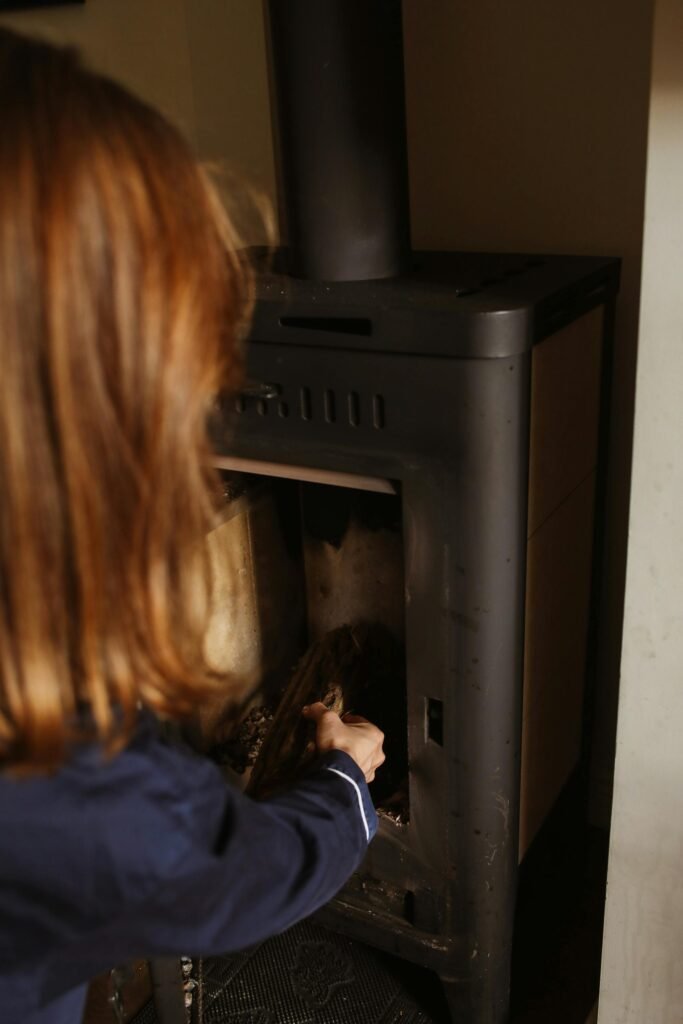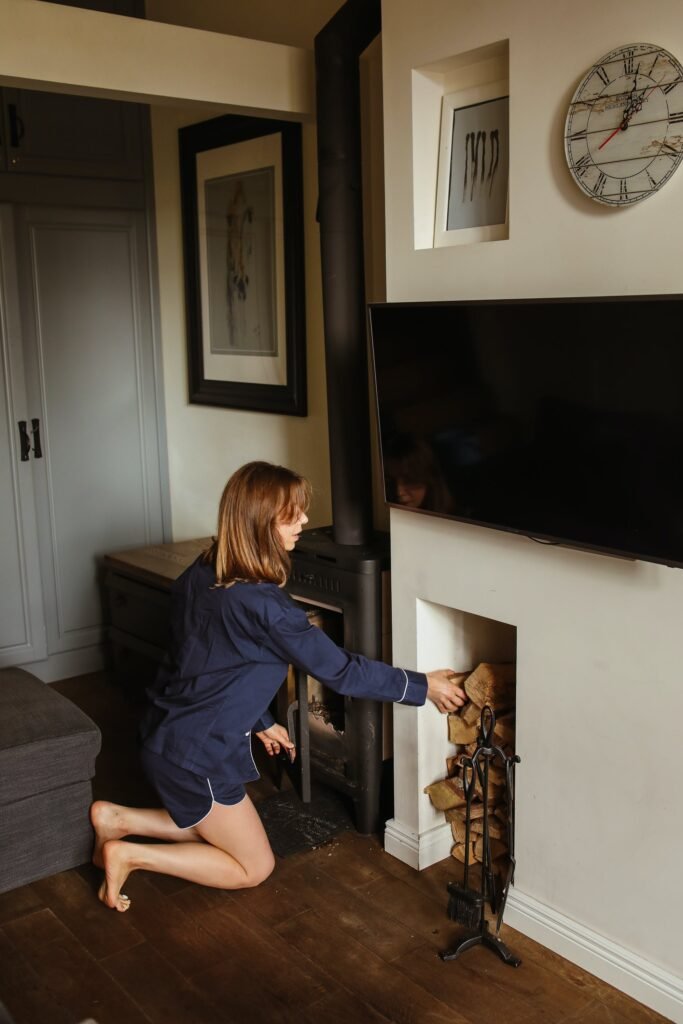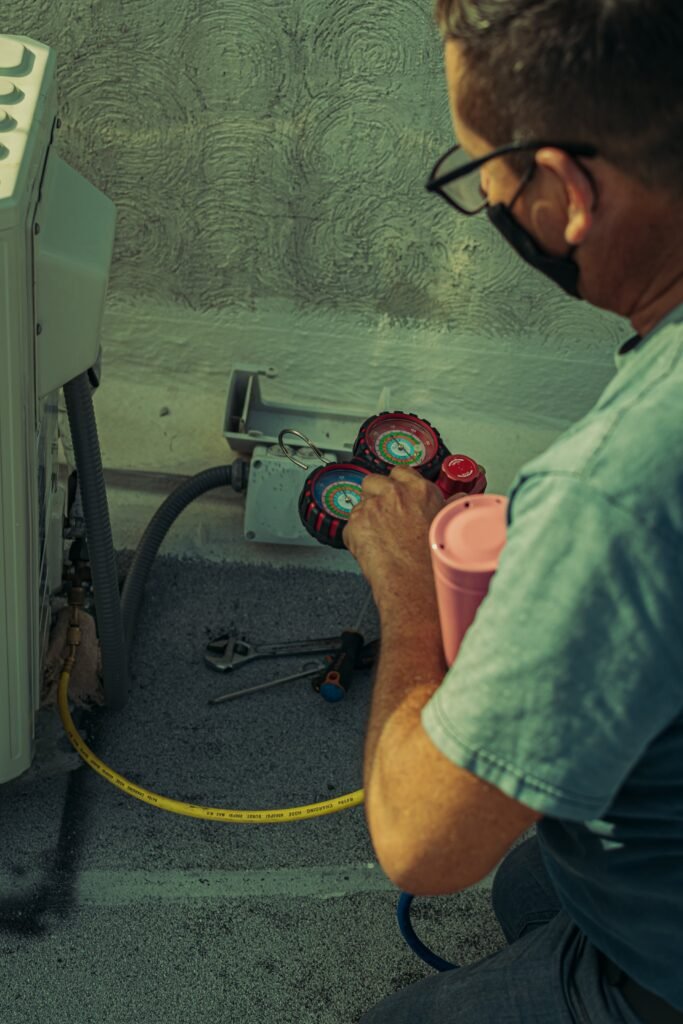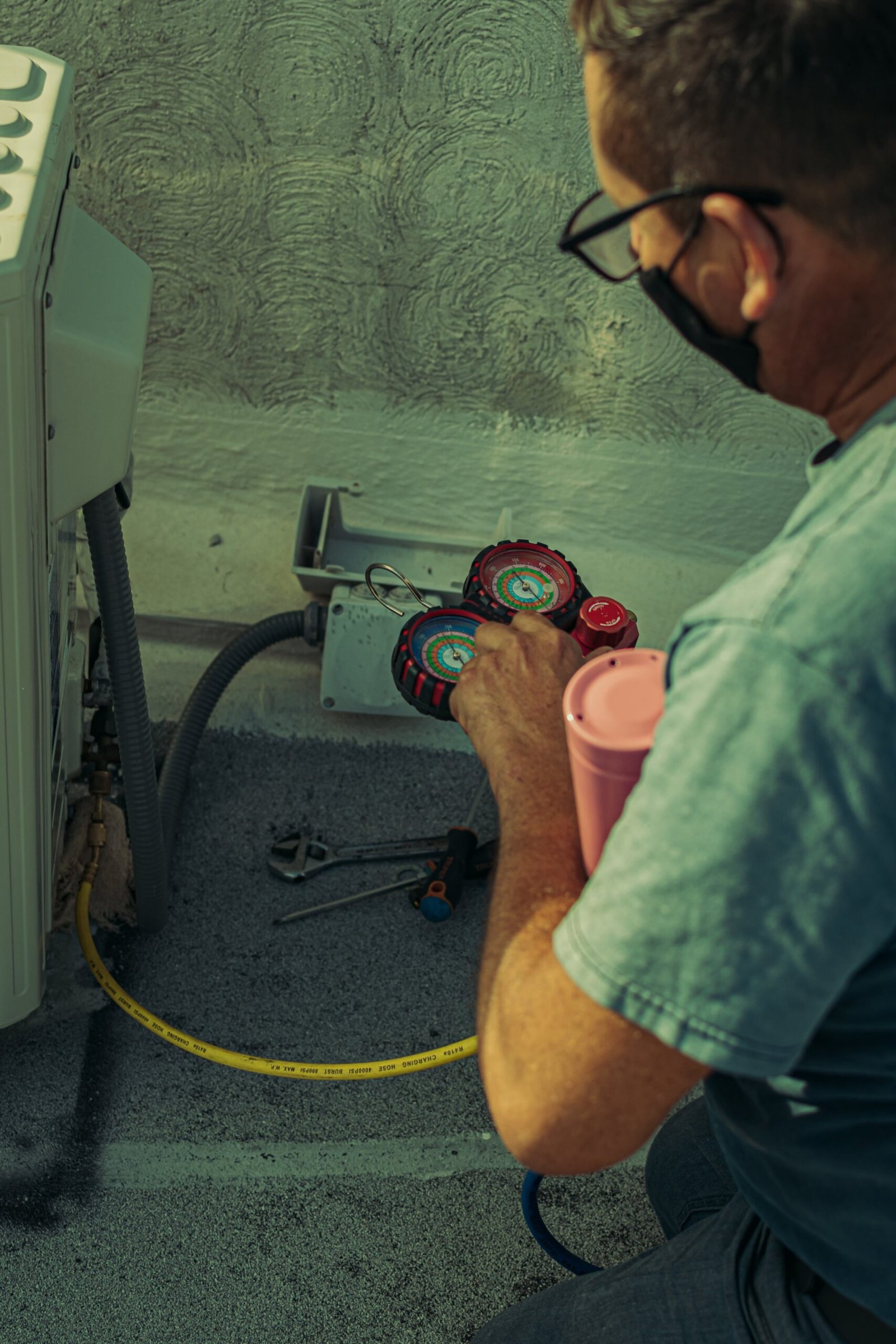Imagine sitting in front of a crackling fire, the warmth enveloping you as the soft glow flickers across the room. It’s a scene straight out of a cozy winter dream. But have you ever considered the deeper benefits of maintaining your fireplace? In this article, we explore the art of fireplace upkeep and how it can become a path to overall wellness. From the physical act of cleaning to the mental tranquility it brings, discover the hidden world of fireside wellness and unlock the secrets to a more harmonious home.
Choosing the Right Fireplace
Types of Fireplaces
When it comes to choosing the right fireplace for your home, there are several options to consider. The most common types include traditional wood-burning fireplaces, gas fireplaces, and electric fireplaces. Traditional wood-burning fireplaces provide an authentic and cozy ambiance, with the crackling sounds and the smell of burning wood. Gas fireplaces offer convenience and ease of use, as they can be controlled with a flip of a switch or the push of a button. Electric fireplaces are a popular choice for those who want the look and feel of a fire without the hassle of maintenance, as they don’t produce real flames or require ventilation.
Considerations for Fireplace Placement
Once you’ve decided on the type of fireplace that suits your needs, it’s important to consider the placement within your home. Ideally, a fireplace should be located in a central area, such as the living room or family room, where it can provide warmth and serve as a focal point in the space. You’ll also need to consider the proximity to flammable materials, such as curtains or furniture, and ensure that there is enough space for proper ventilation and clearance. Consulting with a professional fireplace installer can help you determine the best location for your fireplace.
Ventilation and Safety Precautions
Proper ventilation is crucial when it comes to using and maintaining a fireplace. Wood-burning fireplaces require a chimney to allow smoke and gases to escape, while gas and electric fireplaces may require specific ventilation systems or vents. It’s important to ensure that your fireplace is installed in compliance with local building codes and regulations to prevent any potential hazards. Additionally, installing carbon monoxide detectors near your fireplace is essential for early detection of this silent but deadly gas. Regularly checking and maintaining these safety devices is a small step that can have a huge impact on the overall safety of your home.
Cleaning and Preparing the Fireplace
Cleaning the Firebox and Grate
To start the process of maintaining your fireplace, it’s crucial to clean the firebox and grate regularly. The firebox is the area where the wood or other fuel is burned, and over time, soot and ash can accumulate. Using a stiff brush or a vacuum cleaner specifically designed for fireplaces, remove any loose debris from the firebox and grate. It’s important to wear protective gloves and a mask during this process to minimize exposure to dust and other residue.
Removing Ash and Soot
Removing ash and soot is an essential part of fireplace upkeep. Once the firebox is clean, use a small shovel or ash scoop to carefully remove the ash from the bottom of the firebox. Be sure to let the ash cool completely before disposing of it in a metal container, as hot embers can pose a fire hazard. Once the ash is removed, wipe down the firebox walls with a damp cloth to remove any remaining soot stains.
Inspecting and Cleaning the Chimney
Regular chimney inspections and cleanings are crucial to maintaining the performance and safety of your fireplace. Over time, creosote, a flammable substance, can build up inside the chimney, increasing the risk of a chimney fire. Hiring a professional chimney sweep is recommended to ensure a thorough cleaning and inspection. They will remove any creosote buildup, check for any damage or blockages, and make necessary repairs to keep your chimney in optimal condition. It’s recommended to schedule a chimney cleaning at least once a year, preferably before the start of the burning season.

This image is property of images.pexels.com.
Tools for Fireplace Upkeep
Essential Tools for Fireplace Cleaning
To keep your fireplace in top shape, it’s important to have the right tools on hand. A fireplace shovel or ash scoop is an absolute necessity for removing ash and debris from the firebox. Additionally, a stiff bristle brush or vacuum cleaner with a brush attachment is essential for cleaning the firebox walls and grate. A chimney brush is another essential tool for maintaining your chimney, as it allows you to remove creosote buildup and debris. Investing in these basic tools will make cleaning and maintaining your fireplace a much easier task.
Fireplace Accessories for Maintenance
In addition to the essential tools, there are several accessories that can enhance your fireplace maintenance routine. Fireplace gloves provide protection from hot surfaces and allow you to handle debris safely. A log carrier or basket is useful for transporting firewood from storage to your fireplace. A fireproof mat or hearth rug can protect your flooring from sparks and embers. Finally, a fireplace screen or glass doors can prevent sparks from escaping and protect your home from potential fire hazards. These accessories not only improve safety but also add a touch of style to your fireplace.
Safety Equipment and Gear
When it comes to fireplace maintenance, safety should be your top priority. In addition to the accessories mentioned above, it’s important to have safety equipment and gear readily available. Fire-resistant gloves, safety glasses, and a dust mask or respirator should be worn during cleaning and maintenance tasks to protect against burns, eye injuries, and respiratory irritation. It’s also a good idea to keep a fire extinguisher nearby in case of emergencies. Being prepared and properly equipped will help you maintain your fireplace safely.
Fireplace Fuel and Burning Practices
Choosing the Right Fireplace Fuel
Choosing the right fuel for your fireplace is essential for optimal performance and safety. Wood is the traditional and most common fuel choice for wood-burning fireplaces. Hardwoods like oak and maple burn longer and produce more heat, while softwoods like pine ignite quickly but burn faster. Gas fireplaces typically use natural gas or propane, which provides a clean and efficient burn. Electric fireplaces, on the other hand, don’t require any fuel as they use electricity to generate heat and produce the appearance of flames.
Sustainable and Eco-Friendly Options
If you’re conscious about the environmental impact of your fireplace, there are sustainable and eco-friendly options available. When using a wood-burning fireplace, opt for seasoned firewood that has been properly dried for at least six months. This reduces the amount of smoke and increases the efficiency of the burn, resulting in fewer emissions. Additionally, consider using wood pellets, which are made from compressed sawdust and other organic materials. They burn cleaner and produce fewer pollutants than traditional firewood. Gas and electric fireplaces are inherently more eco-friendly, as they don’t produce harmful emissions or consume natural resources.
Proper Burning Techniques
To ensure a safe and efficient burn in your fireplace, it’s important to follow proper burning techniques. When using a wood-burning fireplace, start with small pieces of kindling and gradually add larger logs. Avoid overloading the firebox, as this can restrict airflow and result in incomplete combustion. Use a fireplace screen or glass doors to prevent sparks from escaping and always keep the damper open when using your fireplace. Regularly check for any obstructions or blockages in the chimney, as these can affect the draft and cause smoke to back up into your home.

This image is property of images.pexels.com.
Maintaining the Hearth and Surroundings
Cleaning and Polishing the Hearth
The hearth, the area directly in front of the fireplace, is often a focal point in any room. To keep it looking its best, regular cleaning and polishing are necessary. Start by removing any loose debris, such as ashes or wood chips, with a brush and dustpan. For stone or brick hearths, use a mild soap or stone cleaner to remove any stains or soot buildup. If you have a wooden hearth, use a furniture polish or wood cleaner to remove dirt and restore its shine. Be sure to follow the manufacturer’s instructions for cleaning and polishing, as different materials may require specific care.
Regular Maintenance of the Fireplace Surround
In addition to the hearth, regular maintenance of the fireplace surround is important to keep it looking pristine. The surround, which includes the mantle and any decorative elements around the fireplace, can accumulate dust, soot, and other debris over time. Use a soft cloth or duster to gently remove any loose dirt or dust from the surface. For more stubborn stains, use a mild soap or cleaner that is suitable for the material of your surround. Avoid using abrasive cleaners or scrub brushes, as these can damage the surface. With regular maintenance, your fireplace surround will continue to enhance the overall aesthetic of your home.
Preventing Damage to Nearby Walls and Flooring
When it comes to maintaining your fireplace, it’s crucial to prevent any damage to nearby walls and flooring. The high heat emitted by a fireplace can cause discoloration, cracking, or other damage to surrounding surfaces if not properly protected. Use a fireplace screen or glass doors to create a barrier between the fire and nearby walls or furniture. Place a fire-resistant mat or hearth rug in front of the fireplace to protect your flooring from sparks and embers. Regularly inspect the area around your fireplace for any signs of heat damage and make necessary repairs or adjustments to prevent further issues.
Understanding the Anatomy of a Fireplace
Parts of a Fireplace System
To effectively maintain your fireplace, it’s important to understand its anatomy. The main components of a fireplace system include the firebox, flue or chimney, damper, and hearth. The firebox is the area where the fuel is burned and the heat is generated. The flue or chimney provides a pathway for the smoke and gases to escape. The damper controls the airflow and helps regulate the intensity of the fire. The hearth is the area directly in front of the firebox and provides a fireproof surface. Familiarizing yourself with these parts will help you identify any potential issues and perform necessary maintenance.
How Each Component Functions
Each component of a fireplace system plays a crucial role in its functionality. The firebox contains the fire and allows for efficient burning of the fuel. The flue or chimney provides a vent for the smoke and gases to exit the home, ensuring proper ventilation. The damper controls the airflow, allowing you to adjust the intensity and duration of the fire. The hearth acts as a protective barrier between the firebox and the surrounding area, preventing heat damage to nearby surfaces. Understanding how each component functions will enable you to maintain your fireplace effectively and ensure its safe operation.
Identifying Common Issues and Solutions
Knowing how to identify common fireplace issues is essential for prompt resolution. Creosote buildup in the chimney can restrict airflow and create a fire hazard. Regular chimney cleanings can prevent this issue. Cracked or damaged refractory panels in the firebox can compromise the integrity of the fireplace and should be replaced. Issues with the damper, such as it being stuck or not closing properly, can affect the airflow and energy efficiency. Addressing these issues promptly will ensure the long-term functionality and safety of your fireplace.

This image is property of images.pexels.com.
Seasonal Fireplace Maintenance
Preparing the Fireplace for Winter
As winter approaches, it’s important to prepare your fireplace for the colder months ahead. Start by scheduling a professional chimney inspection and cleaning to ensure its safe and efficient operation. Stock up on seasoned firewood or other fuel sources, and store them in a dry, well-ventilated area. Check the damper and ensure it opens and closes properly. Clean the hearth and surround, removing any dust or debris. By taking these steps, you’ll be ready to enjoy the cozy warmth of your fireplace throughout the winter season.
Off-Season Maintenance Guidelines
During the off-season, it’s still important to perform regular maintenance on your fireplace. Start by removing any debris or ashes from the firebox and clean the hearth and surround as needed. Check for any signs of damage or wear and make any necessary repairs. Inspect the chimney for any blockages or potential issues. Consider covering the chimney with a chimney cap to prevent debris, birds, or animals from entering during the off-season. By following these off-season maintenance guidelines, you’ll ensure that your fireplace is ready to be used when the weather turns colder.
Routine Checks throughout the Year
Routine checks throughout the year are crucial for maintaining the optimal functionality and safety of your fireplace. Regularly inspect the firebox, chimney, and damper for any signs of damage or deterioration. Check the hearth and surround for any issues, such as loose tiles or cracks. Clean the firebox, grate, and chimney as needed to remove any debris or buildup. Keep an eye out for any changes in the performance of your fireplace, such as difficulty in lighting or excessive smoke. By staying vigilant and addressing any maintenance needs promptly, you’ll ensure that your fireplace remains a safe and enjoyable feature of your home.
Ensuring Fireplace Safety
Fireplace Safety Tips and Practices
Fireplace safety should be a top priority for every homeowner. Follow these essential safety tips and practices to minimize the risk of accidents and enjoy your fireplace with peace of mind. Always use a fireplace screen or glass doors to prevent sparks from escaping. Keep flammable materials, such as curtains or furniture, at a safe distance from the fireplace. Never leave a fire unattended and make sure it is completely extinguished before leaving the room or going to bed. Keep children and pets away from the fireplace, and establish clear safety rules for their interaction with it. By adhering to these safety practices, you’ll ensure a safe and enjoyable fireplace experience.
Carbon Monoxide Detection and Prevention
Carbon monoxide (CO) is a colorless, odorless gas that can be produced by fuel-burning fireplaces. It is a silent killer, as it can cause poisoning without any noticeable symptoms. Installing carbon monoxide detectors near your fireplace is essential for early detection and prevention of CO poisoning. Check the batteries regularly and replace them as needed. Additionally, make sure your fireplace and chimney are properly ventilated to promote the safe release of gases. Carbon monoxide detection and prevention should never be overlooked when it comes to fireplace maintenance and safety.
Maintaining Fire Extinguishers and Alarms
Having functional fire extinguishers and smoke alarms is crucial for your family’s safety. Install smoke alarms on every level of your home, including near the sleeping areas. Test the alarms regularly and replace the batteries as recommended by the manufacturer. It’s also important to have a fire extinguisher easily accessible near your fireplace. Ensure that the extinguisher is in good condition, with a valid expiration date, and familiarize yourself with its proper use. Regularly check the pressure gauge and make sure it is within the recommended range. Proper maintenance of fire alarms and extinguishers can be lifesaving in the event of a fire emergency.

This image is property of images.unsplash.com.
Professional Fireplace Services
Hiring Certified Chimney Sweeps
Hiring a certified chimney sweep is an important step in maintaining the safety and performance of your fireplace. Chimney sweeps are professionals trained in cleaning and inspecting chimneys, as well as identifying and addressing any potential issues. When hiring a chimney sweep, look for certifications from reputable organizations, such as the Chimney Safety Institute of America (CSIA). A certified chimney sweep will ensure that your chimney is thoroughly cleaned, properly maintained, and in compliance with safety standards.
When to Seek Professional Assistance
While regular maintenance can be done by homeowners, there are certain tasks that require professional assistance. If you’re unsure about the condition of your chimney, it’s recommended to schedule a professional inspection. They have the knowledge and expertise to identify any hidden issues or potential hazards. Additionally, if you encounter any issues with the functionality or performance of your fireplace, such as difficulty in starting a fire or excessive smoke, it’s best to consult a professional. They will be able to diagnose the problem and make necessary repairs or adjustments.
Benefits of Regular Inspections and Cleanings
Regular inspections and cleanings offer a range of benefits when it comes to fireplace maintenance. First and foremost, they ensure the safety of your home and family by identifying and addressing potential hazards, such as creosote buildup or chimney blockages. Additionally, regular cleanings improve the efficiency and performance of your fireplace, allowing for better heat output and reduced emissions. Inspections and cleanings also prolong the lifespan of your fireplace system by preventing premature wear and damage. By investing in regular professional services, you’ll enjoy a safer and more reliable fireplace experience.
Conclusion
Reap the Rewards of Fireplace Upkeep
Maintaining your fireplace is more than just a chore—it’s an art that brings warmth, comfort, and serenity to your home. By choosing the right fireplace, cleaning and preparing it regularly, using the proper tools and techniques, and maintaining the surrounding area, you’ll ensure the optimal performance and longevity of your fireplace. Understanding the anatomy of a fireplace, performing seasonal maintenance, and prioritizing safety will keep your home and family protected. Consider incorporating fireplace maintenance into your wellness routines, as it adds a sense of tranquility and coziness to your everyday life. By embracing the art of fireplace upkeep, you’ll enjoy the rewards of a beautifully maintained fireplace that enhances your home and enriches your wellbeing.




